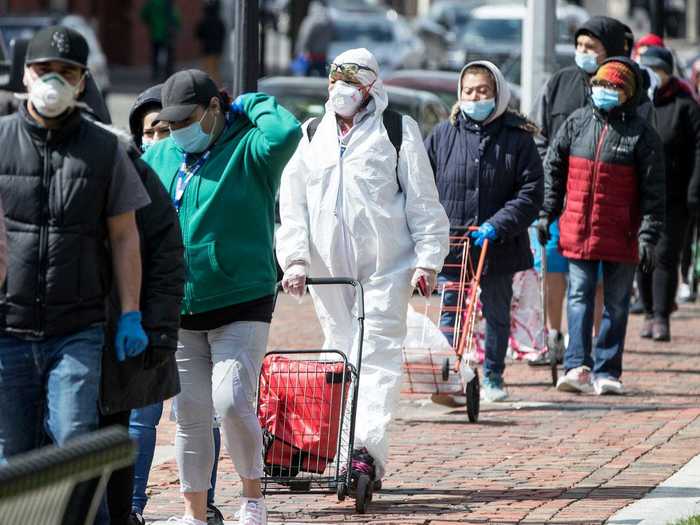
Thousands of unemployed people are gathered in a food line in Times Square during the Great Depression.AP Photo
During the Great Depression, the most tragic economic collapse in US history, more than 15 million Americans were left jobless and desperate for an income.
By 1932, nearly one in four Americans were out of a job, and by 1933, unemployment levels reached an estimated 25%.
Though today's unemployment rate has yet to spike that high, the coronavirus pandemic has left the US economy in its most vulnerable state in almost a century.
The jobs report the US Bureau of Labor Statistics released on Friday found that the unemployment rate spiked to 14.7% in April. Over the past seven weeks, more than 33 million Americans have filed jobless claims.
These photos reveal how desolate the country looked during the Great Depression, when food and job lines stretched for blocks.
Read the original article on Insider
Source: Business Insider

Source: PBS

Sources:PBS, Library of Congress

Source: US National Library of Medicine

Source: University of Houston

Source: University of Houston

Source: University of Houston

Source: University of Houston, PBS

Source: University of Houston

Source: University of Houston

Source: Library of Congress

Source: PBS

Source: PBS


Source: University of Houston

Source: University of Houston, US Census Bureau

Source: University of Houston

Source: University of Houston

Source: University of Houston

Source: University of Houston

Source: University of Houston

Source: PBS

Source: PBS

Source: PBS

Source: PBS
 A couple accidentally shipped their cat in an Amazon return package. It arrived safely 6 days later, hundreds of miles away.
A couple accidentally shipped their cat in an Amazon return package. It arrived safely 6 days later, hundreds of miles away. A centenarian who starts her day with gentle exercise and loves walks shares 5 longevity tips, including staying single
A centenarian who starts her day with gentle exercise and loves walks shares 5 longevity tips, including staying single  2 states where home prices are falling because there are too many houses and not enough buyers
2 states where home prices are falling because there are too many houses and not enough buyers "To sit and talk in the box...!" Kohli's message to critics as RCB wrecks GT in IPL Match 45
"To sit and talk in the box...!" Kohli's message to critics as RCB wrecks GT in IPL Match 45
 7 Nutritious and flavourful tiffin ideas to pack for school
7 Nutritious and flavourful tiffin ideas to pack for school
 India's e-commerce market set to skyrocket as the country's digital economy surges to USD 1 Trillion by 2030
India's e-commerce market set to skyrocket as the country's digital economy surges to USD 1 Trillion by 2030

Copyright © 2024. Times Internet Limited. All rights reserved.For reprint rights. Times Syndication Service.